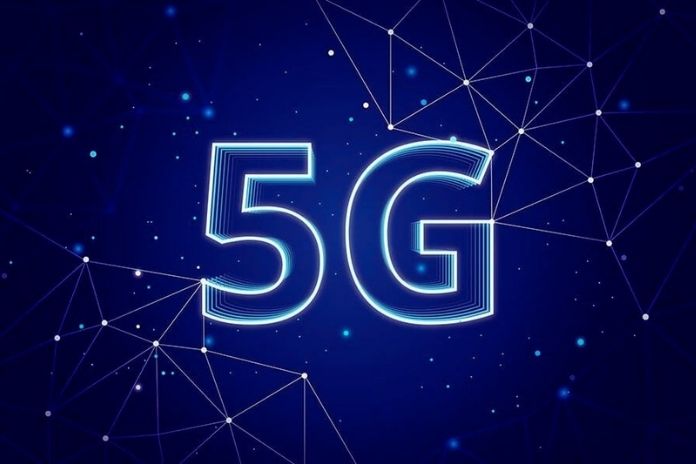5G is currently the buzzword par excellence in the technology industry. In the next five years, most cell phone subscriptions will transition to 5G, bringing unprecedented internet speeds with real-time connectivity. Our globally networked society rejoices, but critical voices are also raised. Because 5G technology also brings with it unknown security risks.
The Risk Potential Of 5G
One of the primary beneficiaries of 5G is undoubtedly the Internet of Things. Thus, the high connectivity of the technology will significantly improve the IoT functions and the interconnectivity of intelligent devices shortly. At the same time, one should not forget that the IoT inherently focuses on ease of use, which is why machines are vulnerable to cyber-attacks. Multiplied by the constantly growing number of networked IoT devices, companies have an enormously large target for attack. Above all, the risk of DDoS attacks, which aim to overload a network and interrupt services, will increase exorbitantly due to the increase in connectivity. But not only DDoS, but ultimately every incoming volumetric cyber attack can pose a threat to the devices connected to 5G.
Another risk potential of 5G can be found in mobility, which will continue to increase due to the new mobile communications standard. Thanks to 5G, it will become even easier and more convenient to work remotely in the future, expand network ecosystems with suppliers and providers and thus increase external connectivity. This presents a perfect scenario for attackers, as breaking into the device of a (perhaps small and insignificant) software or product vendor allows them to move towards a larger company. This will enable attackers to spread their malware across multiple devices within an enterprise supply network.
Why Cybercriminals Are Targeting The Telecom Industry
Although the telecommunications industry has invested heavily in IT security over the last few years, it remains one of the most vulnerable areas in terms of cyberattacks. The industry is a hot spot for hackers, so attacks on telco companies have continued to grow as investments have increased. Its popularity is apparent: by penetrating the telecommunications networks, attackers can gain access to substantial data pipelines and a lot of confidential information, which is like a gold mine.
Added to this is the enormously fast pace of the telco market, which makes it difficult for providers to keep up with security. Telecom companies’ products and services must constantly improve their design and features. The rapid innovation cycles make it difficult to balance security and business (i.e., marketing or design). Potential attackers have long recognized this complexity as a weak point and understand how to exploit it.
Cyber Security Must Come First
Cybersecurity should be a top priority for any business dealing with data and connectivity despite all the challenges and adversities. Therefore, security must be considered and considered in every phase of a product lifecycle – from the initial product development to distribution. In doing so, providers must understand that cyber security is not a one-time implementation but an ongoing process that must be constantly updated. This means organizations need to regularly deploy security updates to protect their networks from new threats. On the other hand, if they procrastinate on security requirements, they can ensure that cybercriminals will know how to exploit this negligence. It is essential to be aware.
Innovation is great, and the consumer market demands must always prevail, but they must never come at the expense of safety. This also applies to the future with 5G. Anyone who skimps on the security check when implementing 5G technology will not benefit from the advantages in the long term. After all, the 5G space is still new, and the full extent of the vulnerabilities associated with this technology is still largely unknown.
The majority of IT professionals and executives are undoubtedly already aware of the threats and risks associated with 5G. Some companies have also introduced advanced security frameworks when implementing 5G technology. However, this is not sufficient in many cases, and further expansion of security measures is necessary if companies want to regain the upper hand in cyber warfare.
It’s not easy, considering that nowadays, cybercriminals only need a small window of opportunity to cause significant damage using malware. Companies face considerable costs if potential attackers are given this leeway, especially in the 5G era. This is mainly because real-time threat assessments are complicated due to the high connectivity enabled by 5G. Therefore, CISOs and security teams should move to automated solutions that continuously monitor connected networks in real-time.
SASE: Striking The Balance Between Security And Optimal Network Performance
If companies want to balance increased security measures and efficient network performance, they must rely on the security framework Secure Access Service Edge (SASE). It is an advanced technology solution that creates greater integration between network and security. First and foremost, SASE ensures that network performance is not compromised while managing security risks. It establishes and maintains security policies, zero-trust access, and network segmentation to contain malware movements and block threats from penetrating every network layer. This reduces the impact of cyberattacks, giving security professionals ample time and resources to stay ahead of them. SASE is a versatile solution that can support organizations in various security areas. It identifies, classifies, and segments unfiltered traffic.
Conclusion
With the introduction of 5G, connected network traffic will involuntarily increase. SASE is an effective solution to effectively control this traffic and protect organizations without disrupting their business operations.
Also Read: Wi-Fi 6, 5G, Artificial Intelligence: The Technological Predictions For 2022

